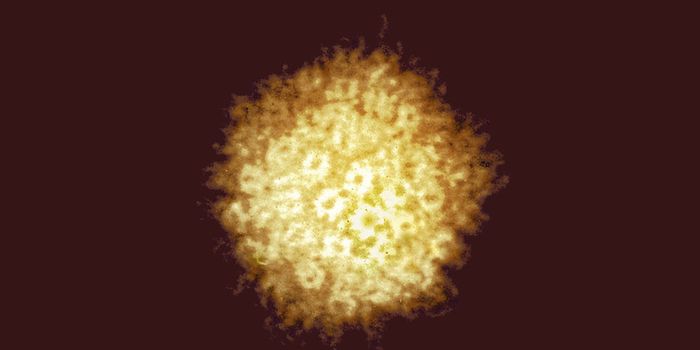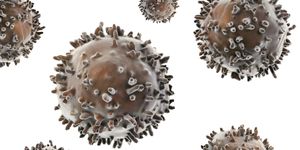Co-evolution in Primates, Lice and Their Bacterial Symbionts
Lice are parasites and interestingly they have their own symbionts; they carry bacteria that produce B vitamins that the lice require. New work has shown that these lice have also evolved right alongside these microbes. Researchers at the Florida Museum of Natural History found that lice, whose only food supply is blood, and bacteria that synthesize important vitamins, have undergone an evolutionary path in parallel with primates that they themselves have infected. The results have been reported in the journal Molecular Biology and Evolution.
These symbiotic bacteria reside in special cells inside of the lice, and are passed on from louse to offspring. The lice can’t live without these symbionts, and the work of Florida Museum researchers Bret Boyd and David Reed has suggested that lice have hosted them for 20 to 25 million years or more. That stretches back to the time of a common ancestor of great apes and old world monkeys.
The work provides new insight into the evolutionary tree of the symbiotic bacteria, said first author Boyd, who conducted the study as a doctoral student with the museum.
"While lice are highly maligned, they provide a wealth of scientific information," said Boyd, who is now a postdoctoral researcher at the University of Georgia. "Because these symbiotic bacteria are tied to a known evolutionary history between lice and primates, this is an ideal system for studying bacterial genome evolution."
The researchers assayed the genomes of both the symbiotic bacteria and lice that have infected chimpanzee, gorilla and red colobus monkey lice as well as those that infect humans. Because many species of lice only afflict one host species, the unique relationships can provide insight into the evolution of primate and human evolution, said Reed, a Curator of Mammals and Associate Director of Research and Collections at the Florida Museum.
"Certain parts of our history are murky and hard to reconstruct," he said. "The evolution of lice and their symbiotic bacteria helps shed light on human and primate evolutionary history, providing new clues to our past."
The researchers determined that the bacterial genomes are small, in the range of 530,000 and 570,000 base pairs. By comparison, the common bacterium Esherichia coli has a genome of around 4.6 million base pairs. Insect symbionts typically have tiny genomes; a lot of their genetic features are lost over time.
"Our results are a departure from previous findings and supporting monophyly instead of symbiont replacement," said Boyd. The blood-sucking tsetse fly hosts the nearest bacterial cousin.
"We found that the evolutionary tree of the bacteria reflects the phylogenetic patterns seen in the lice," explained Boyd. "Within human head and body lice there are distinct clades identified by their mitochondrial haplotypes; potentially a result of modern and extinct hominids exchanging lice. We found that the bacterial tree follows these evolutionary patterns."
"The process by which symbiont genomes change is important to understanding how insects and bacteria form mutualistic relationships that can persist for tens to hundreds of millions of years," he said. "The genes that are retained in the tiny genome provide insights into which genes are essential to maintain bacterial life."
Check out previous work on lice from these researchers in the video.
Sources: AAAS/Eurekalert! via Oxford University Press, Molecular Biology and Evolution

![[Guide] 7 Strategies to Boost Laboratory Collaboration](https://d3bkbkx82g74b8.cloudfront.net/eyJidWNrZXQiOiJsYWJyb290cy1pbWFnZXMiLCJrZXkiOiJjb250ZW50X2FydGljbGVfcHJvZmlsZV9pbWFnZV83YzBjZWIwM2Y5YzI4MmFlYzBhZDZhMTcyNTQ1ZGU3YmE4Y2MzMDYyXzUxNDkuanBnIiwiZWRpdHMiOnsidG9Gb3JtYXQiOiJqcGciLCJyZXNpemUiOnsid2lkdGgiOjcwMCwiaGVpZ2h0IjozNTAsImZpdCI6ImNvdmVyIiwicG9zaXRpb24iOiJjZW50ZXIiLCJiYWNrZ3JvdW5kIjoiI2ZmZiJ9LCJmbGF0dGVuIjp7ImJhY2tncm91bmQiOiIjZmZmIn19fQ==)






